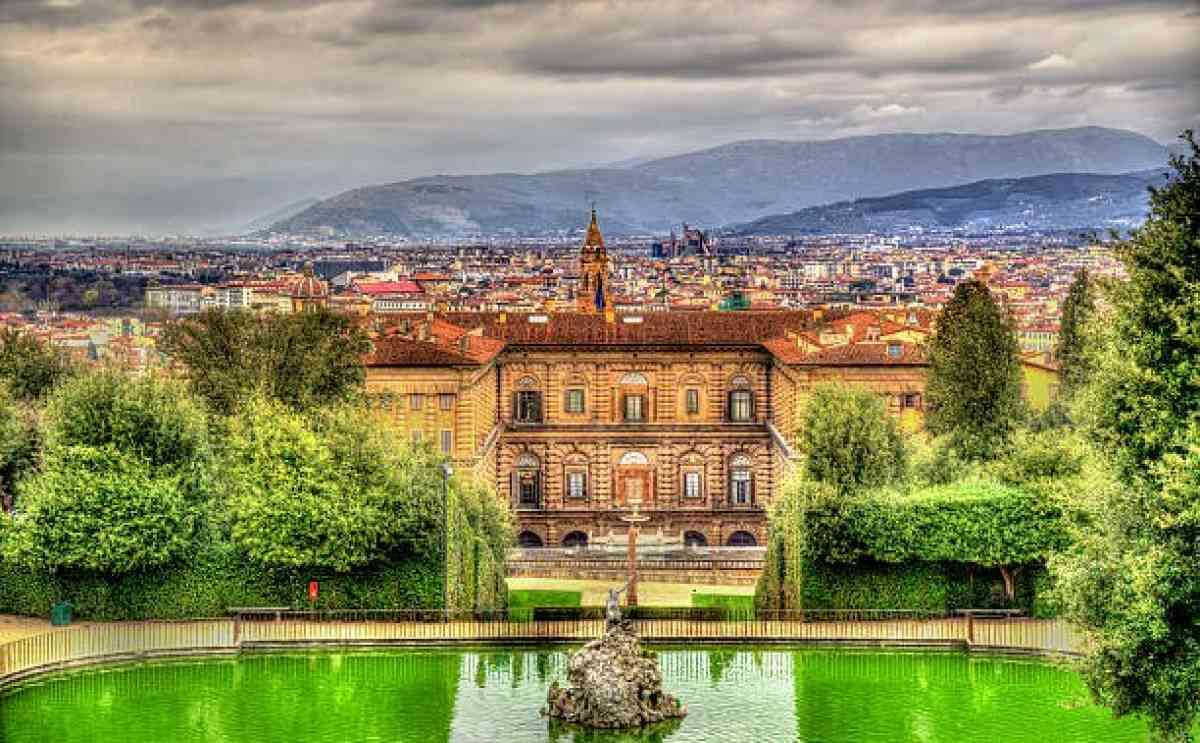Pitti Palace Tourist Guide
- - Category: Destinations
- - 08 Mar, 2022
- - Views: 67
- Save

Monday: Closed on every Monday through out the year Tuesday to Sunday: 8:15 am – 6:50 pm. Museum starts closing dow
Pitti Palace Tourist Guide
Originally designed for Pitti family in 1457, Pitti Palazzo is one of the largest architectural monuments in Florence.
It is divided into several museums and art galleries.
- The Treasury of the Grand Dukes - Ground Floor
- The Palatine Gallery and the Royal Apartments - First Floor
- The Modern Art Gallery - Second Floor
- The Museum of Costume and Fashion - Second Floor
When to go?
Generally whole Florence is crowded during summers, so you must visit Pitti Palace early in the morning when it opens. Advance booking of ticket is an advantage to get rid of long standing queues.
Timing
Monday: Closed on every Monday through out the year
Tuesday to Sunday: 8:15 am – 6:50 pm.
Museum starts closing down at 6:40 pm.
The museum is closed on January 1, May 1 and December 25.
Address: Piazza de' Pitti, 1, 50125 Firenze FI, Italy
Entrance
For accessing Palazzo Pitti you have to purchase tickets or tour guide.
Tickets: Book Palazzo Pitti tickets in advance either from ticket counter or from online platforms. Booking tickets online is the easiest way and save your time, money and energy.
Guided Tours: Booking Guided Tours are the best option to explore this beautiful museum because there is so much to see in Pitti Palace that only Expert Guide can explain you.
You can Book Tour Guide from local travel agency or simply book online according to your language and choice.
Famous Gallery in Pitti Place
Palatine Gallery
It is center of attraction for Pitti Palace. It consists of 28 rooms which contains a large collection of more than 500 Renaissance art work by Europe’s greatest painters (including works by Raphael).
Some of the important rooms in Palatine Gallery are:
Room of Castagnoli: In this room you can see beautiful portraits of royal Medici and Lorraine ruling families, and the Table of the Muses, a masterwork of stone-inlaid table.
Room of the Ark: This room contains a fabulous art work by Giovan Battista Caracciolo of 17th century. The ceiling was frescoes with Noah entering Jerusalem with the Ark by Luigi Ademollo in 1816.
Room of Psyche: This room contains paintings by Salvator Rosa from 1640–1650 and it was named after ceiling frescoes by Giuseppe Collignon.
Hall of Poccetti: Once frescoes on the vault were accredited to Bernardino Poccetti which is now attributed to Matteo Rosselli.
In the center of the hall there is a table commissioned by Cosimo III in 1716. Some of the work by Rubens and Pontormo are also implanted in this hall.
Room of Prometheus: This room contains a wide collection of round shaped paintings which among Madonna with the Child is the most liked painting by visitors. Giuseppe Collignon was the man behind this room frescoes.
Room of Justice: It has a amazing paintings on ceiling by Antonio Fedi and it also display portraits by Tintoretto, Titian and Paolo Veronese.
Room of Ulysses: Room was frescoed by Gaspare Martellini in 1815 and it also contains early art works by Raphael and Filippino Lippi.
Room of Iliad: Once this room was used to play “Trucco”, similar to billiards. Room of Iliad is named after the paintings in the lunettes and on the ceiling that depict scenes from Homer's epic poen, "The Iliad".
Lorenzo Bartolini designed the sculpture in the center of the room and it represent charity.
Room of Saturn: It mainly contains a art work by Raphael which includes Portrait of Agnolo Doni, the Madonna of the chair, and Portrait of Cardinal Inghirami and Cardinal Dovizi. It also contains an Annunciation by Andrea del Sarto, and Jesus and the Evangelists by Fra Bartolomeo.
Room of Jupiter: This room contains the painting by Rubens, Andrea del Sarto, Perugino, Bronzino and Justus Sustermans. Famous paintings in room are portrait of Galileo Galilei by Sustermans and Veiled Lady by Raphael,
Room of Mars: It is characterized by the works of Rubens. Here the visuals representing the Consequences of War (represents the name of the room) and the Four Philosophers (among them Rubens portrayed himself on the left along with his three brother Phillip, Juste Lipse and Jan Woverius).
Room of Apollo: This rooms contains a portrait of Madonna with Saints by Rosso Fiorentino. Other famous paintings are Magdalen and Portrait of an English Nobleman by Titian.
Room of Venus: It contains the statue of Venere Italica by Antonio Canova commissioned by Napoleon. On the walls are the landscapes by Salvator Rosa and four paintings by Titian which includes a Portrait of Pope Julius and La Bella.
